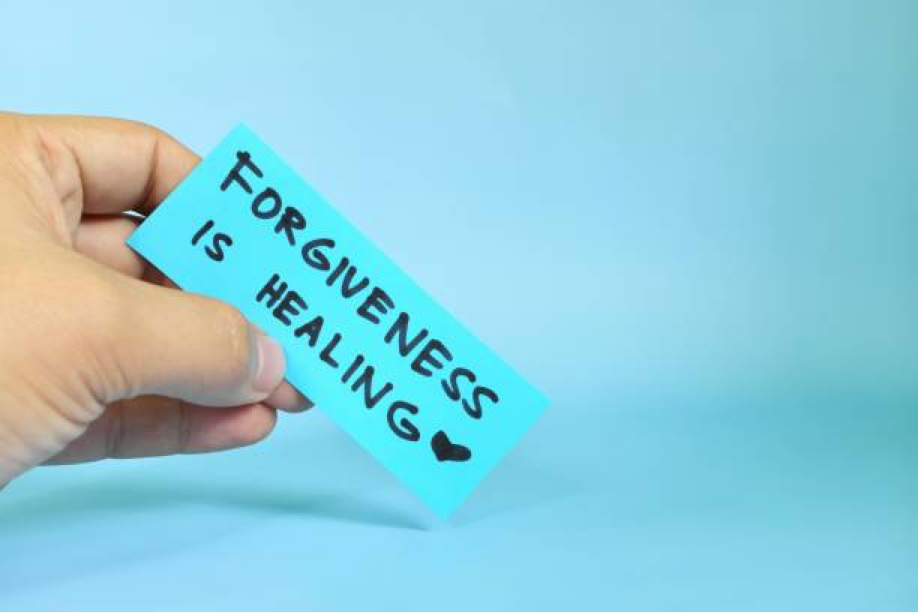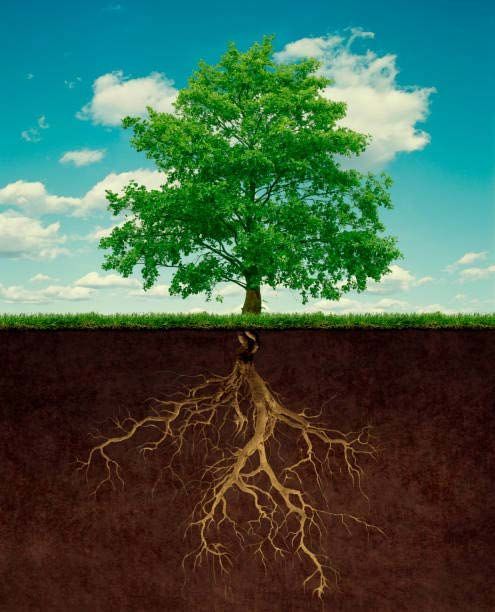Staff
Competency 4: Spiritual Fatherhood
Posted by Holy Family Counseling Centers Staff on April 20, 2020
This competency will focus on empowering priests to become more committed, accessible, and engaged in their role as spiritual fathers to their parishioners in a healthy and sustainable manner.
A. PATERNITY - The ideal of paternity and what it means to be a father in the real world. What is the role of a father?
Society is in need of fathers. The figure of positivity and authority, standing next to their children with a spirit of love and creativity is seen less and less. The absence of fathers is seen in the insecurity of young people and the increasing desire to put off adulthood. In his book, Father: Will There Still Be Priests in Church’s Future?, Massimo Camisaca states that when fathers are not present, children struggle to connect with reality, enduring it but not facing it. As foster father to Jesus, Joseph stands as one of the most well-known fathers in history. In this year of St. Joseph, we use the model of his role as a father to understand how fathers, both spiritual and biological, can strive towards the ideal that he set forth.
From Darth Vader to Atticus Finch, the idea of what it means to be a father has been portrayed numerous times throughout popular culture. Some fathers, like Mr. Finch, are morally steadfast and attuned to their children’s emotions. On the dark side of the spectrum, fathers like Darth Vader are morally ambiguous, ignore their children, are extremely selfish, and generally toxic. In our personal lives, and in the experiences of vocation, we have probably seen fathers that fall between these two extremes. In both these examples, the reach of being a father extended beyond that of their biological children and affected many of those around them.
The traditional assumption has been that a father’s role is to provide, protect, and establish a path forward for his family. Historically, father’s have been viewed as providers that go out to work and return each day; their efforts put food on the table and provide a safe place for their families to live, while providing ongoing direction. This view of providing is somewhat limited. Research indicates that the role of fathers encompasses much more than material provisions. Emotional intelligence, confidence, and safety are also aspects of what fathers bring to their families.
many different responsibilities. On any given day, a priest may be the first responder to a family going through a significant loss. Perhaps you will be directing family members on the role of ethics in end-of-life decisions. Other days involve the role of catechist, teaching young and old about the faith, and still other days require you to be a confessor, consoling those as they unburden themselves. Lastly, you are also an administrator; handling budgets, schedules, and employees. Managing these roles can be difficult, especially when multiple roles are required every day. Using St. Joseph as a paradigm for godly example of paternity, Pope Francis in his apostolic letter Patris Corde lays out seven ways in which St. Joseph implemented his fatherhood. A summary of the criteria follows:For priests, the role of spiritual father is one that carries aspects of what was noted above along with
- A beloved father: Joseph lived his role as a father by sacrificing his life to the mystery of the incarnation.
- A tender and loving father: Though he had fears and uncertainties, Joseph helped to raise Jesus and teach him about the world.
- An obedient father: Joseph always followed the will of God the Father, remaining steadfast in his role as head of the family and following the guidance of God.
- An accepting father: Joseph accepted the course of events in his life, he set aside himself and accepted things the way they were.
- A creatively courageous father: Joseph faced many problems, and willingly embraced them, turning problems into possibilities.
- A working father: Joseph has long been known as the worker and work is often seen as our own way in participating in the work of salvation, putting our talents and abilities in service to others.
- A father in the shadows: the work Joseph did was not always seen, yet we know through the life of Jesus that he had a great effect.
A spiritual fatherhood is also one that takes on a person’s formation, their education and training as an integrated individual and member of a community, even without a biological relationship. This is the example offered to us by St. Joseph. Jesus was entrusted to Joseph by God the father. The people served in parishes are also entrusted by Another. The duties and responsibilities of today’s priests are becoming more challenging with each passing year. It is so easy to find yourself stretched to the point of breaking, discouraged, allowing your priorities to get out of balance, overwhelmed with text and emails thus affecting your personal life as well as your vocation to the Church.
Working with families on a daily basis, priests have a very clear understanding of the demands of fatherhood in the role of a family. So often, fathers struggle with the daily challenges and expectations of work, married life and raising children. They are often so busy taking care of everyone else that they often put their own needs last. Does this sound familiar to you?
Borrowing from Ephesians 5 and the millennia of Roman Catholic Christian tradition, priests are married to Christ’s church and are the spiritual father to many. In order to meet the needs of so many and still do the work that is pleasing to Our Father, it is important and healthy to establish boundaries and safeguards to insure productivity as well as maintain a healthy balance personally. Trying to embrace St. Paul’s example of being all things to all people (1Cor 9:22), we can be our own worst enemy trying to be everything to everyone. That can be a perilous expectation, perhaps achievable in moments by God’s grace, yet not sustainable without healthy boundaries and safeguards.
B. Spiritual Paternity - Priests are countercultural
Admittedly, the Trinity is not the first subject that came to mind when preparing to discuss spiritual fatherhood. Yet once pondering it, beginning with the God we together with Jesus call Father made perfect sense. At the very center of our faith is the lived celebration of the new covenant of kinship with God who is revealed to us first and foremost as “Father”. God creates and is thus Father to humanity, a brother to us in the person and incarnation of the Son, and a blessed companion in the Holy Spirit of love.
God as Father is the starting point of our credal formulas, reminding us that it is through the love of God the Father that we are given the gift of the Son through the power of the Holy Spirit (John 3:16). Throughout his public ministry Jesus proclaims the message that God loves the children of humanity as a “Father”, and mother for that matter, love their own children (Cf: Matthew 23:27 and Luke 13:34). With this in mind the foundational inspiration for the Church’s understanding throughout the centuries that the ministry of spiritual fatherhood strives at putting into practice the love of God for all humanity.
We remember with a tenderness that yields a sense of consolation how in Mark 14:36 Jesus addresses His Father (and ours) as “Abba, Father” in His prayer in Gethsemane. In Romans 8:15, “Abba, Father” is mentioned in relation to the Spirit’s work of adoption that makes us God’s children and heirs with Christ. Then in Galatians 4:6, again in the context of adoption, the Spirit in our hearts cries out, “Abba, Father”. Scripture passages such as these inspire the very venerable tradition of understanding that the work of spiritual fatherhood is to transmit this fatherly love of God for all people and to make it tangible in the life of every Christian seeking spiritual nourishment and guidance. This nourishment and guidance is encapsulated in the message that God is a father to us and that he loves each of us personally. No wonder that from the Desert Fathers and Mothers of early Christianity until today we call our ordained ministers “Father”, for they are called to provide parental spiritual nourishment and guidance to the faithful they shepherd.
Celebrating godly fatherhood in the witness of St. Joseph, Pope Francis begins his recent Apostolic Letter Patris Corde saying: “WITH A FATHER’S HEART: that is how Joseph loved Jesus….” The letter then goes on to say that:
“After Mary, the Mother of God, no saint is mentioned more frequently in the papal magisterium than Joseph, her spouse. My Predecessors reflected on the message contained in the limited information handed down by the Gospels in order to appreciate more fully his central role in the history of salvation. Blessed Pius IX declared him “Patron of the Catholic Church”, Venerable Pius XII proposed him as “Patron of Workers” and St. John Paul II as “Guardian of the Redeemer”. Saint Joseph is universally invoked as the “patron of a happy death.”
Quoting St. John Chrysostom Pope Francis celebrates how St. Joseph put himself in the service of the entire plan of salvation precisely by being a tender and loving spouse to Mary as he was equally a tender and loving father to Jesus. The letter then speaks of St. Joseph’s other virtues as being prayerfully obedient and accepting, displaying creative courage in the face of difficulties, hard working and humble…noting that fathers are not born, but made. The Holy Father admonishes that a man does not become a father simply by bringing a child into the world, but by taking up the responsibility to care for that child, noting that whenever a man accepts responsibility for the life of another, in some way he becomes a father to that person.
Worthy of note too are the spiritual disciplines of Catholic Watchmen out of the Archdiocese of St. Paul and Minneapolis. Discipline three is “Striving to be a spiritual father like St. Joseph.” They encourage an awareness of entering into a “Spiritual Combat” where a “man persistently commits to ‘step into the breach’ (Ezek 22:30) to be a protector, provider and leader for his family, his parish and for the Church.” They strongly encourage that persistent vigilance is essential because while many men are “good dads” who attempt to provide for their children’s necessities (shelter, food, education, etc.), what is required in spiritual fatherhood are men who shepherd many souls (especially their own children) to become adopted children of God. For them: “It is every Catholic man’s duty to be a spiritual father.” Responding to this paternal vocation is a grace filled task that demands persistent and prayerful discernment of oneself and others.
C. Maintaining Good Boundaries as a Spiritual Father
As we strive to live out the virtues that God has infused in us and work to become our “best spiritual father,” we need to be clear about the boundaries we put into place with ourselves and others that will result in good health, happiness, and holiness. Boundaries are what happen when we sense what we need and want and then use our voice to speak those things. Priests often have their limits violated by parishioners or others that are needy, overly dependent, and have high expectations. Most of the time this is not intentional on the part of the other person. Boundaries need to be clearly defined and communicated—always with kindness, courage, respect, and forgiveness, if there is a violation. Here are guidelines for boundary setting in 4 areas along with questions to ponder:
1. PHYSICAL— Includes needs for personal space, comfort with touch, and physical needs like rest, eating food, and drinking water. It is okay to tell people you don’t want to be touched except for a handshake or that you need more space. It is also okay to set a certain amount of time to be present with parishioners and family to visit with them. Then when that time is up, politely excuse yourself to address your physical needs. Some examples of communicating physical boundaries are:
- “I need to eat. I am going to go grab something.”
- “Don’t go into my room without asking first.”
How often will you accept invitations to eat/visit with parishioners? How much time do you need alone vs. with others? How much time do you need with family and friends to lessen burnout and feel invigorated? Are you getting adequate sleep (approximately 8 hours). If not, what is the reason? Remember to allow your personality to help guide you. Extroverts may want to spend more time with others while introverts may need more time alone to recharge.
2. EMOTIONAL— Includes respect and honor for feelings and energy. Setting emotional boundaries means recognizing how much emotional energy you are capable of taking in, knowing when to share and when not to share, and limiting emotional sharing with people who respond poorly. Respecting emotional boundaries means validating the feelings of others and making sure you respect their ability to take in emotional information.
We violate emotional boundaries when we:
- Dismiss and criticize others’ feelings
- Ask questions that are not appropriate for the relationship
- Read or go through other’s personal and emotional information
- Ask people to justify their feelings
- Assume we know how other people feel
- Tell other people how they feel
- “Emotionally dump” on people without their permission
How would I assess myself in these areas of emotional boundary violations?
3. TIME— Recognizing that your time is valuable, it is important to define priorities then allocate adequate time for work/doing and rest/being. We can communicate boundaries regarding time by saying statements or asking questions such as: •
- “I can’t come this weekend.”
- “I can only stay for an hour.”
- “Do you have time to chat today?”
- “I would love to help, but I would be overcommitting myself. Is there another time?”
Some examples of violated time boundaries look like:
- Demanding time from people without asking.
- Keeping people in conversations or on tasks for longer than we told them we would. Showing up late or canceling on people without properly notifying them.
- Contacting people when they said they would be unavailable.
Do I know my priorities? Do I need to change how I schedule my time so that I have a better balance between doing and being? Am staying emotionally nourished? Am I too needy by looking for others to entertain or guide me rather than knowing my own needs/wants?
4. INTELLECTUAL—Includes thoughts, ideas, and ability to be curious. Healthy intellectual boundaries include respect for the ideas of other people with a willingness to understand the other person. Intellectual boundaries can be violated when thoughts and curiosity are shut down, dismissed, or belittled. Some statements that could be useful in conversation include: •
- “I know we disagree, but I won’t let you belittle me like that.”
- “I would love to talk about this more, but I don’t think talking about it during Thanksgiving dinner is the best time.”
- “When we talk about this, we don’t get very far. I think it is a good idea to avoid the conversation right now.”
- “I can respect that we have different opinions on this.”
We need not accept all other opinions nor do you need to continue in conversations where our intellectual boundaries are being disrespected.
Am I able to recognize when another person is disrespecting my opinion and then set a boundary to discontinue the conversation? Do I belittle or dismiss others who are trying to share information with me and reciprocate a willingness to try to understand. (Earnshaw, 2019).
Remember, it is important and healthy to establish boundaries and safeguards to ensure a healthy balance both personally and in our vocations. Often, we can be our own worst enemies when we try to be everything to everyone. Healthy boundaries will help you to become the happy, healthy, and holy priest that was the goal of being a priest when your vocation was first realized. All forms of fatherhood come through Him who is our eternal Father. As spiritual fathers we enter into His school and attempt to learn His methods as closely as possible. Through discovery as God as our father we can become the fathers that he wants us to be, and that our people deserve.






